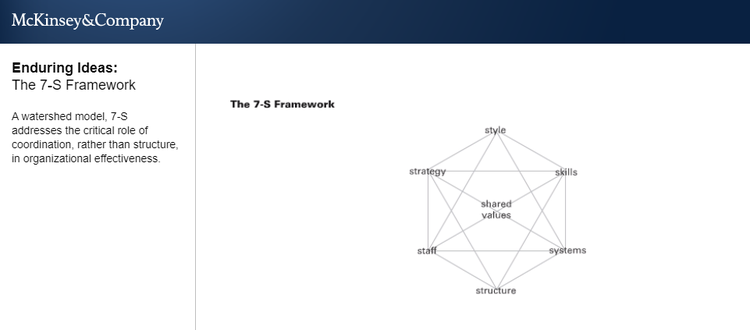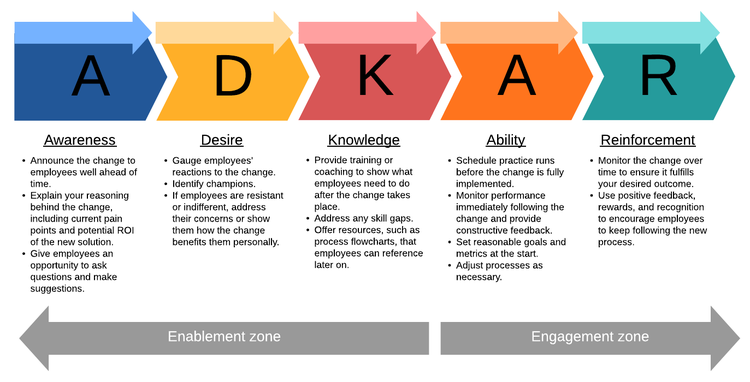We all know what they say about change: It’s the only constant in life. Realizing this is true is the easy part. Accepting change, especially when it disrupts the way we work or how we live our lives, is a whole different ball game.
But companies cannot grow and thrive in an ultra-competitive marketplace without embracing change. It’s the only way to keep up.
However, that doesn’t mean it’s okay (or beneficial) to force change upon your employees and teams, no matter how dire the need. When change is unwelcome or introduced without preamble, people will resist it.
An online poll conducted by a consultancy company found that only 38% of employees will willingly leave their comfort zones.
The majority either don’t like change or will only leave their comfort zones occasionally -- which is why it’s critical that business leaders approach organizational change armed with a solid change management plan.
Overview: What is change management?
Change management refers to the systems and approaches used for supporting people before, during, and after an organizational change. The end goal is to reap the benefits such changes are expected to bring while minimizing the negative effects of the disruption.
The change management process applies to several types of organizational change:
- Transitional change: Occurs when a company replaces existing systems or processes with new ones. Examples: corporate restructuring, adopting new technologies, and mergers or acquisitions.
- Developmental change: Usually a small, incremental change that aims to correct or improve existing business procedures. Examples: updating billing and payroll processes, realigning current marketing strategies.
- Transformational change: A profound or extreme reshaping of an organization’s processes and strategies, which also alters the work culture. It often occurs in response to unexpected market shifts that result in a significant revenue drop or a stiffer competitive landscape. Examples: an overhaul of the company’s strategic direction, offering completely different products or services, and adopting totally different technologies.
The 4 best models to implement change management
Change management models are frameworks that guide organizations when navigating and managing change in the workplace. Many models exist, but the following are among the most popular:
Model 1: Lewin’s change theory
Developed by American social psychologist Kurt Lewin, this organizational change management theory follows a simple and practical three-step process for handling change in general.
Unfreezing
Before you can remold an ice cube into a sphere or some other shape, it first has to melt -- in other words, you’ll have to unfreeze it. Many employees don’t like change. At this stage of the process, your goal is to prepare them for change.
Communicate how old procedures, structures, and thought processes -- the status quo, essentially -- are hindering the company from achieving growth, becoming competitive, and maintaining profitability.
The more they understand the rationale behind the change, the more they know how it benefits them, then the more likely they are to cooperate.
Changing
Once people have been “unfrozen” from old beliefs and systems, they’re ready to proceed to the next step -- the changing, also called the moving or transitioning phase. It’s when the actual change process occurs. Employees learn new methods and procedures.
They adopt new ways of thinking and behaving. As this stage is rife with uncertainty, fear, stress, and worry, communication and employee support are extremely vital.
Freezing
The freezing -- sometimes called refreezing -- stage is when the change finally becomes part of employees’ “new normal.” This final step is critical because without reinforcement, people may go back to their old habits, systems, and ways of thinking.
Model 2: McKinsey’s 7-S model
McKinsey’s 7-S framework was first introduced in the 1970s and “maps a constellation of interrelated factors that influence an organization’s ability to change.” It was developed to help organizations that know something has to change but aren’t sure exactly what yet.

McKinsey’s 7-S model is a holistic approach to organizational change. Image source: Author
The 7-S represent these organizational elements, which companies must reference to diagnose and understand where change is necessary:
- Style: An organization’s informal rules and conduct, behavior patterns, the work culture, or how things are done within the company.
- Skills: Individual and institutional skills that make up an organization’s competencies and capabilities.
- Systems: Procedures and processes, including electronic or project management software systems, the organization has in place. Examples are HR procedures, risk management processes, and client management systems.
- Structure: The organization’s structure or how business units and divisions are organized, including the authority relationships within that structure.
- Staff: The people in the company, their qualities, how talents are grown and developed, and each working role’s characteristics and attributes, such as education and attitude.
- Strategy: What the company is doing to build competitive advantage.
- Shared values: Standards, beliefs, and principles that form the foundation of an organization’s culture. They guide how employees behave and, over time, provide the identity by which the company is known.
Each element is equally important and valuable. When using the 7-S model to diagnose an organization, all the elements must work together and align with one another.
Model 3: Kotter change model
This change model is the product of Harvard professor and renowned management consultant John Kotter, who’s spent four decades observing leaders and organizations. One of the most widely implemented change management theories, Kotter’s model follows eight steps to emphasize that change isn’t quick or easy:

Dr. John Kotter’s change management model follows an eight-step process. Image source: Author
- Create a sense of urgency: Motivate employees to embrace change by communicating and highlighting the importance of taking immediate action.
- Build a guiding coalition: The team you put together will champion change within the organization. Its members should possess a range of skills and experience and must come from various areas of the business.
- Form a strategic vision: Create a relatable, inspiring, and easy-to-understand vision that conveys what the future looks like -- and how you intend to turn that vision into reality.
- Enlist a volunteer army: Get buy-in from all levels of the organization. The team or guiding coalition you’ve built should communicate the vision continuously. The goal is to incite people to move in the same direction and, ultimately, drive change.
- Enable action by removing barriers: Remove roadblocks that limit your initiative’s chances of success. These may include people (help them understand the vision and how they benefit from it), legislation (ensure you follow all regulations in your area), and cultural barriers (learn about the different cultures and how to accommodate them).
- Generate short-term wins: Implementing change can be a long and gruelling process. Recognize short-term wins that exemplify the benefits of the change early and often, so people stay motivated.
- Sustain acceleration: The journey will get tough at some point, but never give up. Don’t become complacent about early successes and risk losing your focus. Be relentless and keep on pushing until the objectives of the change are in place.
- Institute change: Reinforce change by rewarding adopters and continuously communicating the benefits -- until the change replaces old habits and becomes part of the workplace culture.
Model 4: ADKAR model of change
ADKAR is a change methodology based on best practices and provides a “helpful framework for discussing change.” It uncovers the root cause of employees’ inability to change and focuses on integrating change into the organization’s project management processes.
Created by Jeff Hiatt, the founder of Prosci, a change management consulting company, ADKAR is an acronym for:
- Awareness: Employees should be made aware of the need for change and the associated requirements.
- Desire: Gauge employees’ desire for change. Will they resist it, or champion it? The goal is to get everyone to support the change, so address whatever concerns your people may have.
- Knowledge: Provide employees and other stakeholders with the knowledge they need to make the change. Identify and close skill gaps, if any.
- Ability: Ensure everyone is able to make the change through practice runs and constant feedback and monitoring.
- Reinforcement: Sustain change and make it permanent through proven reinforcement methods such as rewards, recognition, and positive feedback.

The building blocks of the ADKAR change theory. Image source: Author
Instituting change that sticks
Implementing organizational change is no easy feat -- hence, the necessity of a proven framework to get your company to the state you want it to be.
The above theories of change management are just a few from a list of many. You can choose one or mix and match elements from multiple models, but the objective remains the same: institute change and make it last.
Our Small Business Expert
We're firm believers in the Golden Rule, which is why editorial opinions are ours alone and have not been previously reviewed, approved, or endorsed by included advertisers. The Ascent, a Motley Fool service, does not cover all offers on the market. The Ascent has a dedicated team of editors and analysts focused on personal finance, and they follow the same set of publishing standards and editorial integrity while maintaining professional separation from the analysts and editors on other Motley Fool brands.